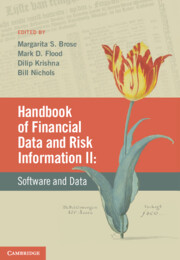PART IV - DATA OPERATIONS IN FINANCIAL INSTITUTIONS
Summary
The first volume of the Handbook described the need and context for data infrastructure changes in financial institutions (FIs) arising from regulatory pressures and increasing sophistication in risk management. The volume also described the major types of data found in FIs. This volume turns to the issue of how to implement an infrastructure to satisfy the risk management needs raised previously. One obvious aspect of implementation – technology – is addressed in Part V. Part VI follows by describing processes to assist in effectively implementing and running an environment to manage an analytics on financial data.
Most (but not all) data in an FI are created at the point of transaction. These data are then used in different parts of the organization. In addition, there are processes to derive data from underlying transactional data – this is common in risk measurement activities for example. Much of the challenge of implementation arises with how data are created or modified in an FI. If data are created with a high degree of fidelity at the point of origination, then the challenge of data integration and usage is much simplified. Unfortunately, however, many major FIs generate transactional data of sometimes questionable quality. In addition, operations in these FIs involve creating aggregate reports by drawing from source systems in ways that are often not consistent, resulting in concerns about the fidelity of the resulting reports and analytics generated from this information.
- Type
- Chapter
- Information
- Handbook of Financial Data and Risk Information IISoftware and Data, pp. 3 - 6Publisher: Cambridge University PressPrint publication year: 2014



